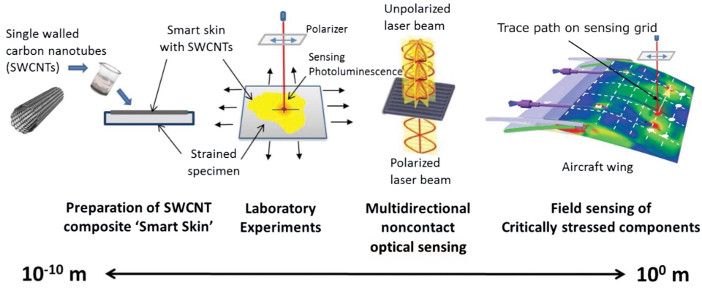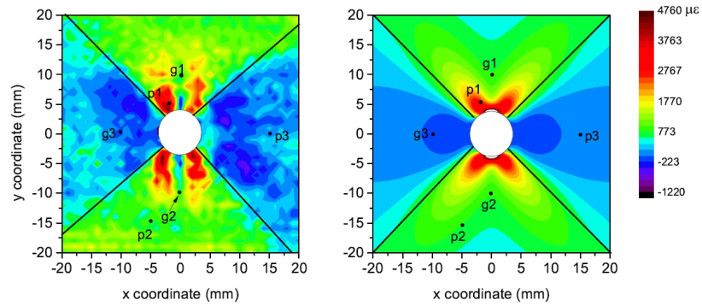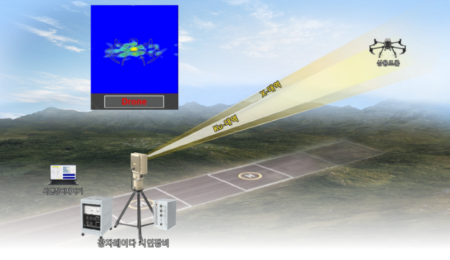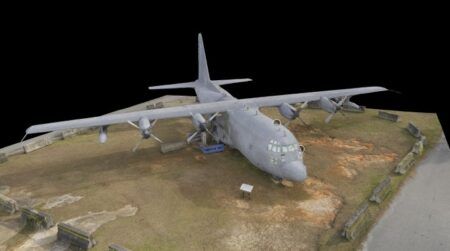Researchers from Rice University in Houston, Texas have devised a way of measuring the accumulated strain in an aircraft’s structure over its surface down to microscopic levels.
The inspection process involves shining a light onto structures coated with a two-layer carbon nanotube film and protective polymer. Strain in the surface shows up as changes in the wavelengths of near-infrared light emitted from the from the fluorescing nanotube film and is captured by a hand-held reader.
Used on an aircraft, the results of the inspection will show engineers and maintenance crews whether the structure has been deformed by stress-inducing events or regular wear and tear.
Early development
The process exploits a property of carbon nanotubes first discovered in 2002 by professor of chemistry at Rice University Dr Bruce Weisman, that carbon nanotubes fluoresce and that stretching the nanotube changes the color of the fluorescence.
Weisman said, “The project started out as pure science about nanotube spectroscopy and led to the proof-of-principle collaborative work that showed we could measure the strain of the underlying substrate by checking the spectrum of the film in one place.
“That suggested the method could be expanded to measure whole surfaces. What we’ve shown now is a lot closer to that practical application.”
Researchers have refined the composition and preparation of the film and its airbrush-style application. They have also developed the scanner devices that automatically capture data from multiple programmed points.
Unlike conventional sensors that only measure strain at one point along one axis, the smart film can be selectively probed to reveal strain in any direction and location.
The two-layer film is only a few microns thick, a fraction of the width of a human hair, and barely visible on a transparent surface.
Researcher on the latest project and Professor of civil and mechanical engineering at Rice University, Satish Nagarajaiah said, “In our initial films, the nanotube sensors were mixed into the polymer.
“Now that we’ve separated the sensing and the protective layers, the nanotube emission is clearer and we can scan at a much higher resolution. That lets us capture significant amounts of data quickly.”
Latest tests
The researchers tested the smart skin on aluminum bars under tension with either a hole or a notch to represent the places where strain tends to build. Measuring these potential weak spots in their unstressed state and then again after applying stress showed dramatic changes in strain patterns pieced together from point-by-point surface mapping.

“We know where the high-stress regions of the structure are, the potential points of failure,” Nagarajaiah said. “We can coat those regions with the film and scan them in the healthy state, and then go back and re-scan to see whether the strain distribution has changed and the structure is at risk.”
The researchers said the measured results from the tests were a close match to strain patterns obtained through advanced computational simulations. Readings from the smart skin allowed them to quickly spot distinctive patterns near the high-stress regions, Nagarajaiah said. They were also able to see clear boundaries between regions of tensile and compressive strain.
The results of the latest research have been published in the Journal of Structural Engineering.
“We measured points 1 millimeter apart, but we can go 20 times smaller when necessary without sacrificing strain sensitivity,” said Weisman. “That’s a leap over standard strain sensors, which only provide readings averaged over several millimeters.”
The next step in the research is to develop an updated version of the strain reader able to capture strain patterns over a large surface in a single operation.
“It’s not going to replace all existing technologies for strain measurement right away. But it has advantages that will prove useful when other methods can’t do the job,” added Weisman.
“I expect it will find use in engineering research applications, and in the design and testing of structures before they are deployed in the field.”





